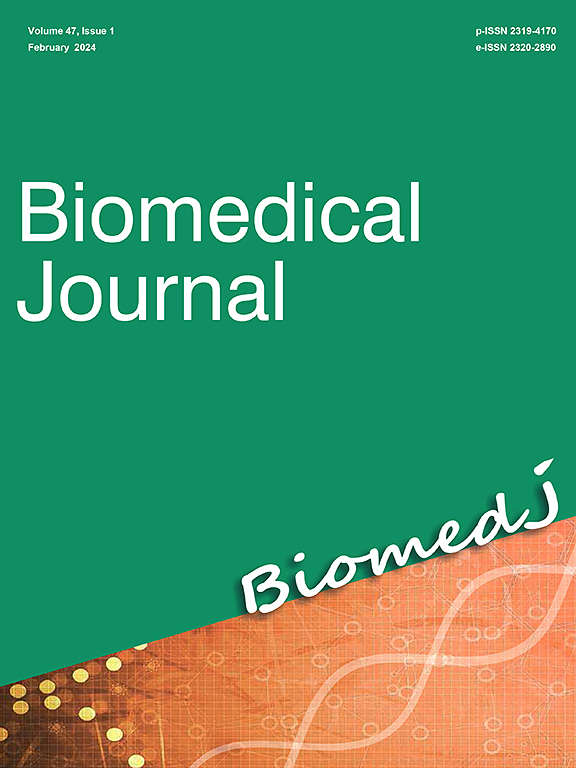甲状腺癌中SALL1与超声造影参数及免疫逃逸的相关性
IF 4.4
3区 医学
Q2 BIOCHEMISTRY & MOLECULAR BIOLOGY
引用次数: 0
摘要
背景:超声造影(CEUS)广泛用于诊断甲状腺癌(TC),但其鉴别恶性结节的准确性有限。我们鉴定了TC相关的差异表达基因(DEGs),并研究了这些基因,特别是SALL1对TC细胞内免疫逃逸机制的影响。方法与材料:对GSE65144数据集进行DEG分析,鉴定与TC相关的基因。功能富集分析侧重于与垂体功能相关的基因,其中SALL1被确定为关键候选基因。使用TC病例的临床数据来评估SALL1表达与超声造影参数联合诊断的影响。此外,使用操纵SALL1表达的TCP-1细胞系研究体外细胞行为,而在裸鼠体内研究评估与SALL1表达相关的肿瘤生长和免疫微环境变化。结果:我们鉴定出152个与垂体功能相关的基因,包括NKX2-1、CDH1和SALL1。TIMER数据库分析显示SALL1与TC免疫细胞浸润相关。临床发现,SALL1在TC中表达下调,且与CEUS参数有显著相关性,将SALL1表达与CEUS结合可显著提高TC的诊断准确性。在体外,低SALL1表达增加细胞增殖、TC进展和免疫逃逸,而上调则导致细胞活性降低、细胞凋亡增加、自噬和焦亡活化。在体内,裸鼠模型显示沉默SALL1可促进肿瘤生长,而过表达SALL1可抑制肿瘤进展并调节免疫微环境。结论:SALL1联合超声造影可提高TC的诊断准确性,突出SALL1作为TC的潜在生物标志物。本文章由计算机程序翻译,如有差异,请以英文原文为准。
Correlation of SALL1 with CEUS parameters and immune escape in thyroid carcinoma
Background
Contrast-enhanced ultrasonography (CEUS) is widely used to diagnose thyroid carcinoma (TC), though its accuracy in differentiating malignant nodules is limited. We identified TC-associated differentially expressed genes (DEGs) and examined the impact of these genes, particularly SALL1, on immune escape mechanisms within TC cells.
Methods and materials
DEG analysis was conducted on GSE65144 dataset to identify genes associated with TC. Functional enrichment analysis focused on genes related to pituitary function, with SALL1 identified as a key candidate. Clinical data from TC cases were used to assess the diagnostic impact of combining SALL1 expression with CEUS parameters. Additionally, TCP-1 cell lines with manipulated SALL1 expression were used to investigate cellular behaviors in vitro, while in vivo studies in nude mice evaluated tumor growth and immune microenvironment changes linked to SALL1 expression.
Results
We identified 152 DEGs, including NKX2-1, CDH1, and SALL1, which are associated with pituitary function. TIMER database analysis revealed SALL1's correlation with immune cell infiltration in TC. Clinically, SALL1 was downregulated in TC and showed a significant correlation with CEUS parameters, and combining SALL1 expression with CEUS markedly enhanced diagnostic accuracy for TC. In vitro, low SALL1 expression increased cell proliferation, TC progression, and immune escape, whereas upregulation led to reduced cell activity, increased apoptosis, and activation of autophagy and pyroptosis. In vivo, nude mouse models demonstrated that silencing SALL1 enhanced tumor growth, while overexpression inhibited tumor progression and modulated immune microenvironment.
Conclusions
Combining SALL1 with CEUS improves TC diagnostic accuracy, highlighting SALL1 as a potential biomarker in TC.
求助全文
通过发布文献求助,成功后即可免费获取论文全文。
去求助
来源期刊

Biomedical Journal
Medicine-General Medicine
CiteScore
11.60
自引率
1.80%
发文量
128
审稿时长
42 days
期刊介绍:
Biomedical Journal publishes 6 peer-reviewed issues per year in all fields of clinical and biomedical sciences for an internationally diverse authorship. Unlike most open access journals, which are free to readers but not authors, Biomedical Journal does not charge for subscription, submission, processing or publication of manuscripts, nor for color reproduction of photographs.
Clinical studies, accounts of clinical trials, biomarker studies, and characterization of human pathogens are within the scope of the journal, as well as basic studies in model species such as Escherichia coli, Caenorhabditis elegans, Drosophila melanogaster, and Mus musculus revealing the function of molecules, cells, and tissues relevant for human health. However, articles on other species can be published if they contribute to our understanding of basic mechanisms of biology.
A highly-cited international editorial board assures timely publication of manuscripts. Reviews on recent progress in biomedical sciences are commissioned by the editors.
 求助内容:
求助内容: 应助结果提醒方式:
应助结果提醒方式:


